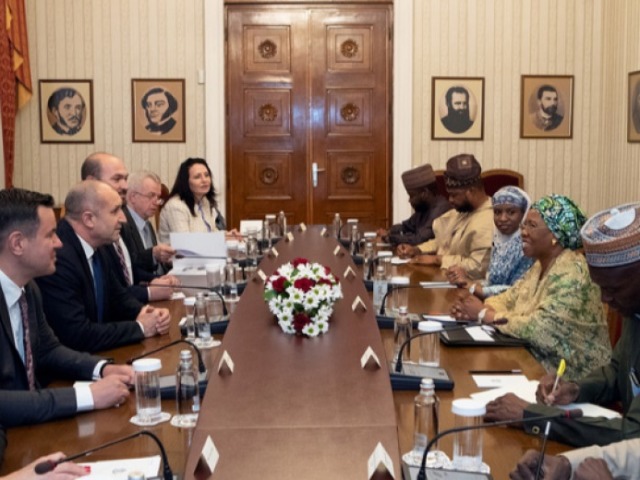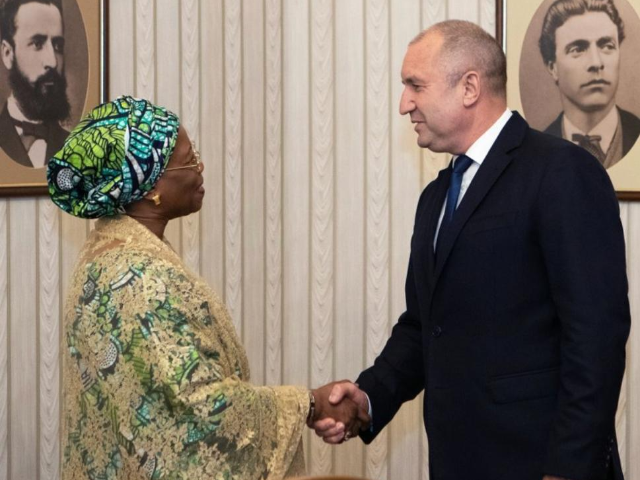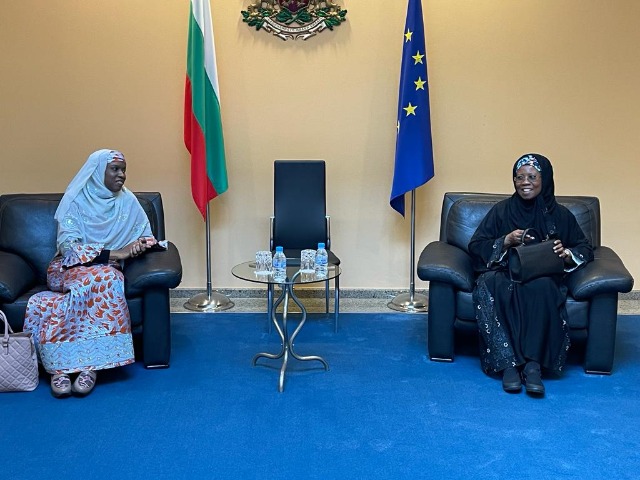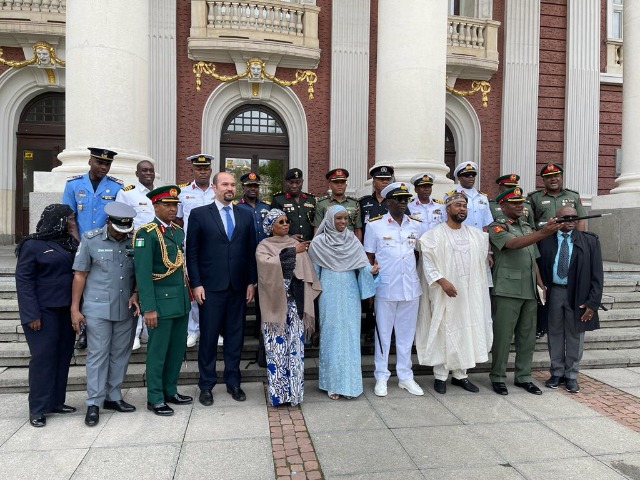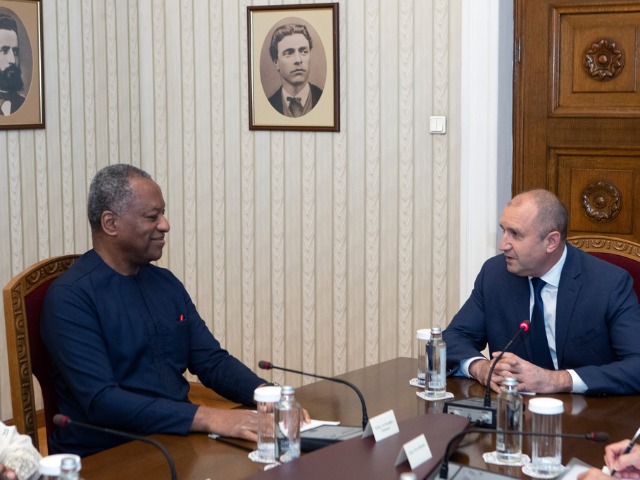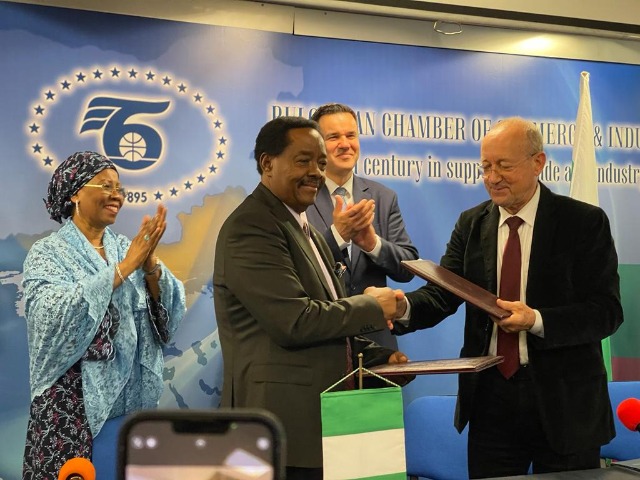.jpeg)
Culture and Tourism
Culture and Tourism
Because of the great diversity of people and culture, Nigeria has distinguished herself over the centuries in the field of arts. Nigerian versatility in the arts is so great that it is generally felt that all African nations should view Nigeria as the principal trustee of the most durable fruits of black artistic genius. It is not precisely known when the first works of Nigerian art reached the outside world, but in 1897, following a British punitive expedition to Benin, over 2,000 Benin bronzes and ivories were shipped to England and later dispersed all over Europe and America.
The oldest sculptures found in Nigeria were from the Southern Zaria and Benue areas of central Nigeria. They consist of terracotta figures and figurines made by a people who achieved a high degree of cultural sophistication. These sculptures, together with other cultural elements, have been named the Nok Culture. Evidence shows the Nok people had knowledge of iron smelting and adorned themselves with tin and stone beads, earrings, nose rings and bracelets. The Nok Culture is dated between 500 B.C. and 200 A.D. The next known phase of Nigerian cultural evolution was Igbo Ukwu bronze casting. Found in the small village of Igbo-Ukwu, near Awka, the casts date from the 9th Century A.D. They first came to light in 1938 and consist of staff heads, crowns, breastplates, pendants, ornaments, anklets, wristlets and chains.About the same time the Igbo-Ukwu people were casting bronze, the ancient Ife people were also producing works in bronze, copper, and terracotta. In the first quarter of this Century, Ife works caused a great stir among world art critics and historians who were unaccustomed to such naturalism in African art. The best known Nigerian artworks are the Benin Antiquities. Legend recounts how the Benin people learned the art of bronze casting from Ile-Ife around 1400 A.D. Oba Ogunta, the sixth King of Benin, is credited with having encouraged this art in Benin.
Nigeria's cultural heritage is woven from threads of history and diversity, legend and conquest. Tourists visiting the country will gain insights to a glorious past as well as a promising future, set amid the natural beauty of this diverse country. From rain forests in the south, broad savanna woodlands in the center to a semi-desert region in the north, Nigeria offers a remarkable range of physical beauty in her land and hospitality of her people, ready to be enjoyed by the tourist fortunate enough to choose this land of ancient empires as their travel destination.
Nigeria is a vast country with a population of about 140 people covering about 923,768 sq.km of landmass, located wholly within the tropics. The country aptly described as the 'Giant of Africa' and the Heart of Africa is richly endowed with ecological and cultural resources, which are of universal recognition. The richness and diversity of the Nigeria culture is a manifestation of the socio-cultural differences of the over 250 ethnic groups that inhabit the land for ages.
Tourism is one of the growing sectors of the Nigerian economy. The industry was accorded priority status in 1990 when the National Tourism Policy was launched. The main thrust of Government policy on tourism was to generate foreign exchange earnings, create employment opportunities, promote rural enterprises and national integration, among other things.
In recognition of the immense contributions of tourism to the national economy, the country's Vision 2010 set year 2005 as the nation's year of tourism. The obvious implication of this development is that tourism policies and programmes will now be aimed at making Nigeria the "Ultimate Tourism Destination in Africa".
Nigeria's Appeal To Tourists
Nigeria offers a wide variety of tourist attractions such as extended and roomy river and ocean beaches ideal for swimming and other water sports, unique wildlife, vast tracts of unspoiled nature ranging from tropical forests, magnificent waterfalls, some new rapidly growing cities and climatic conditions in some parts particularly conducive to holidaying. Other attractions include traditional ways of life preserved in local customs; rich and varied handicrafts and other colourful products depicting or illustrative of native arts and lifestyle, and the authentic unsophisticated but friendly attitude of many in the Nigerian population. However, many of these attractions are still largely untapped and even at their raw, undeveloped state, they are still being enjoyed by few outsiders, either very rich visitors in quest of exoticism or adventurous people in search of new challenges and experiences. The lack of required modern infrastructural facilities and in some parts of the country, acute conditions of underdevelopment and poverty can be seen which many potential Nigeria bound tourist may not like to be confronted with. These are impediments to tourism, which the new administration has been tackling since assumption of office. Investors, both foreign and local, are therefore called upon to come and invest in the abundant tourism potentials in the country. The richness and diversity of Nigeria's tourism resources coupled with economic liberalisation policies will provide investment opportunities in various areas as follows:
Heritage/Cultural Tourism Resources Development of slave trade relics
Establishment of museums and preservation of monuments
Eco-tourism, including Wildlife Tourism Resources
Development of hiking trails and Jeep tracks in the national parks
Development of picnic and camping sites at strategic locations within the trail circuit system in the national parks
Building of tourist lodges
Building of reception centres at Natural/Physical Attractions
Provision of cable bus system to take tourist through the very rugged but scenic terrain of the mountains especially in Kanyang, Obudu and Mambilla Plateau Construction of lodge cabins for expedition tourist and rangers.
Establishment of hotels and resorts near waterfalls, springs, caves and temperate climate areas such as Obudu, jos and Mambila Plateau.
Beach Tourism potentials Establishment of boating and sport fishing facilities
Development of water transportation Provision of educational facilities for water skiing and swimming
Establishment of holiday resorts along the coasts.
Development of Amusement parks, entertainment facilities and shopping services
Development of arts and crafts which constitute symbol of the people's cultural values and love for nature.



